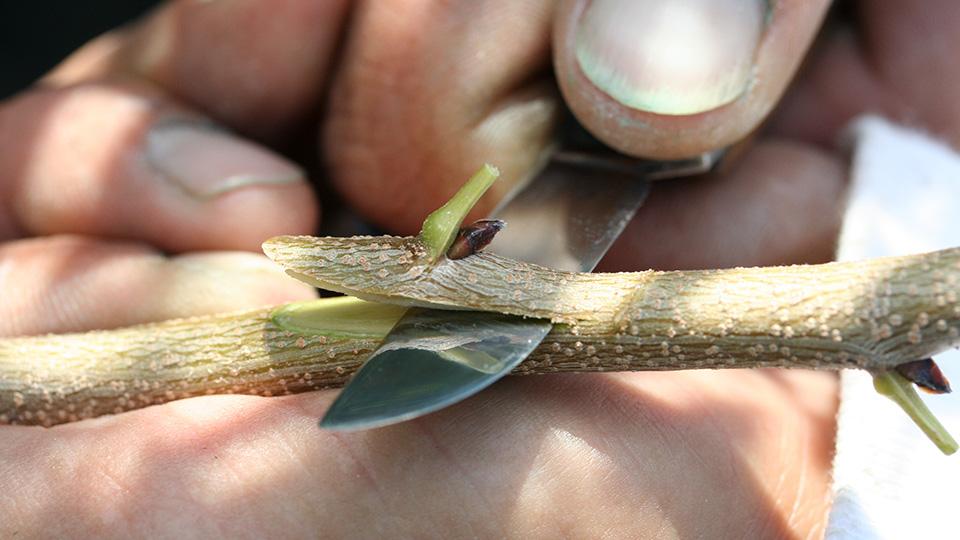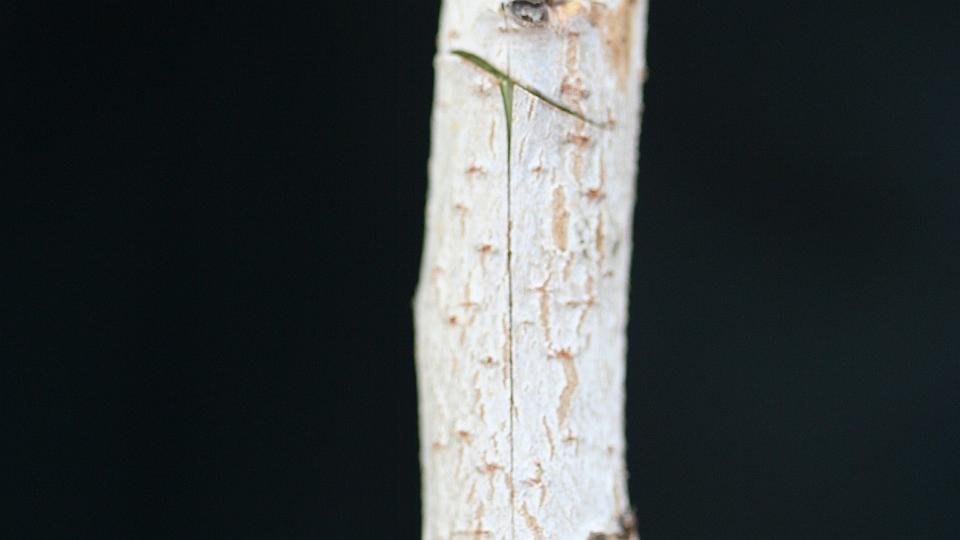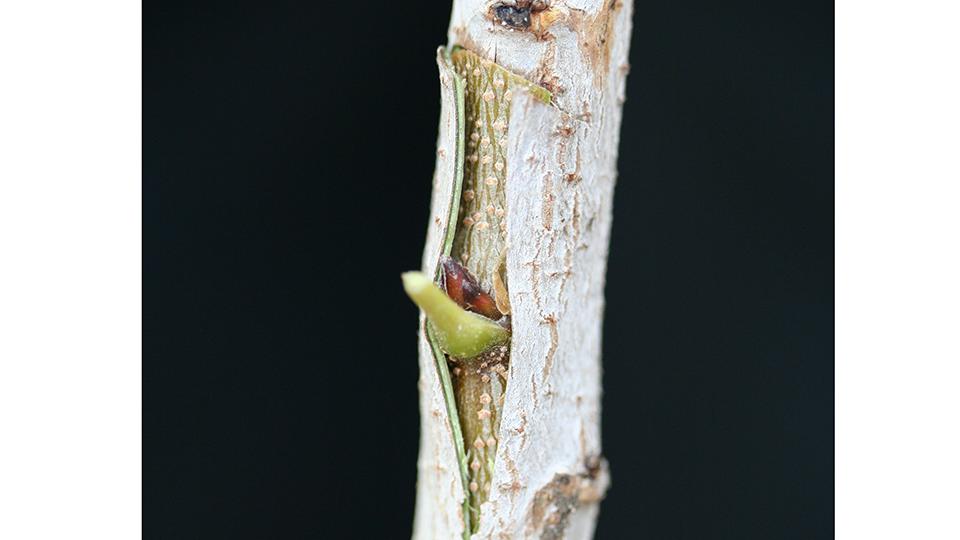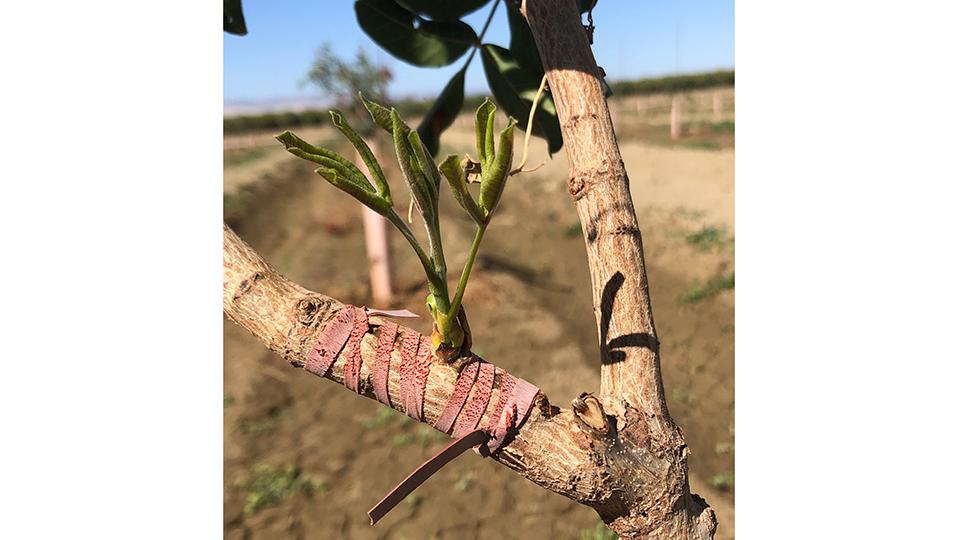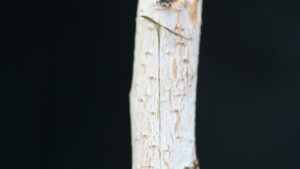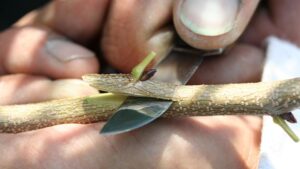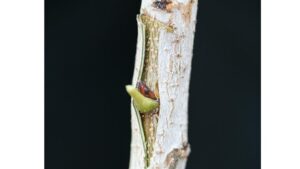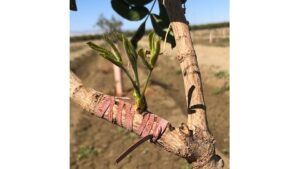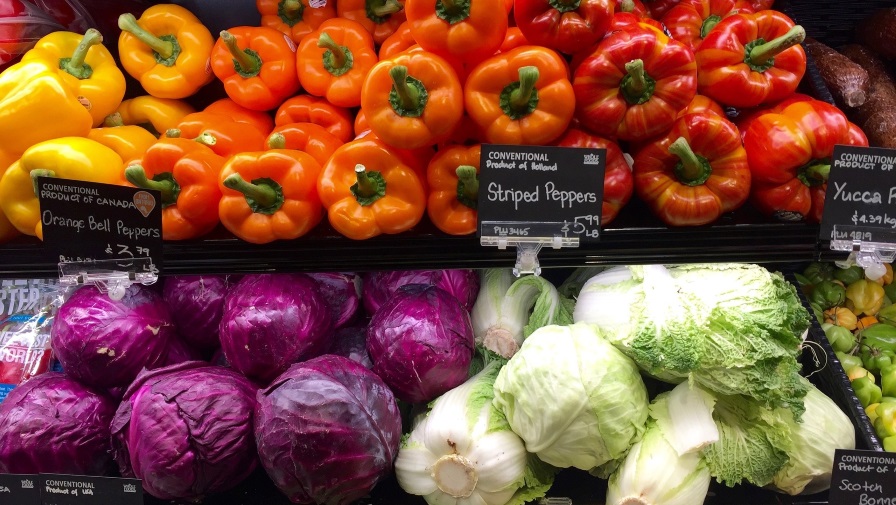Strategies for Success in Budding First-Year Pistachio
When budding pistachios, successful ‘bud take’ and subsequent orchard uniformity is not a given. Careful attention to the timing and execution of several factors will likely save time, money, and effort in the long term. First, make sure the nursery provider has a license to propagate and to sell the selected variety budwood material, and the budder is certified to graft plant material onto rootstocks for use in pistachio nut production. Communicate and establish an agreement early on and well ahead of when it is time to bud material.
T-budding is the primary, if not sole method of grafting scions to rootstock in the U.S. pistachio industry. The name comes from the T-like appearance of the cut that creates the opening for insertion of the scion bud. First-year orchards are budded between July and late August when trees reach a height of at least 36 inches, a stem diameter of 3/8 to ½ inch, and the rootstock bark easily “slips.”
Slipping refers to the ease with which the wood tissue at the site of the 1½-inch T slit can be separated from the outer bark during the active period of cell division growth of the vascular cambium tissue. Budding takes place during the heat of summer, making it critical to ensure there is adequate soil moisture to maintain bark slippage and the ease by which the bud can be inserted.
The optimal rootstock thickness is dependent on the intended scion to graft. ‘Golden Hills’ tends to have larger diameter stems than the traditional ‘Kerman’ variety, so it is best to wait until rootstock diameter closely matches that of the bud-shield, a name that references the outline of the bark that surrounds the bud to be inserted in the rootstock.
Buds are selected from the current season’s rapidly growing, uniformly mature shoots of trees less than 6 years old.
Budding before early September allows the bud adequate time to grow then harden before the risk of an early frost, which has been known to kill young shoots.
Callus cells develop to heal the tree at the site of the union. However, the wound from the bud insertion never completely mends, leaving this part of the tree always more susceptible to injury and infection through its lifetime. For this reason, it is vitally important that the T-bud is established 28 to 32 inches from the soil’s surface to ensure the union is above where the harvester shaker clamp attaches to the tree at harvest time.
Increased Demand
Pistachio rootstock has been in demand in recent years with more than 34,380 acres planted across California’s Central Valley in 2021 alone. A limited supply of trees or other complications with orchard preparation can delay planting, leaving some growers with the choice of planting later in the season or waiting until next year.
Young orchards planted after mid-April may not attain adequate size to bud. Even when trees are budded at the optimal time, there inevitably will be a handful of rootstocks that will need a second attempt to reach 100% success across the orchard. The difficulty with these scenarios is that during the following spring, rootstock growth will rapidly reach the optimal budding size, while scion bud wood does not fully mature until early July.
Successful budding can still be achieved in spring, four to six weeks before the normal budding time, using dormant budwood that has been carefully collected, sealed, and stored the prior season. The wood is removed from cold storage, and the standard T-bud procedure is followed.
Once established, the additional growing time for the scion may be beneficial to achieve satisfactory height and girth by the end of the season, and better uniformity for tree training during the next dormant period.
Contact your nurseryman or local UC Cooperative Extension farm advisor for more resource information on how to accomplish successful in-field budding.




